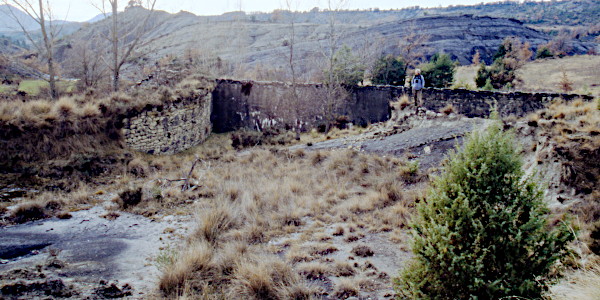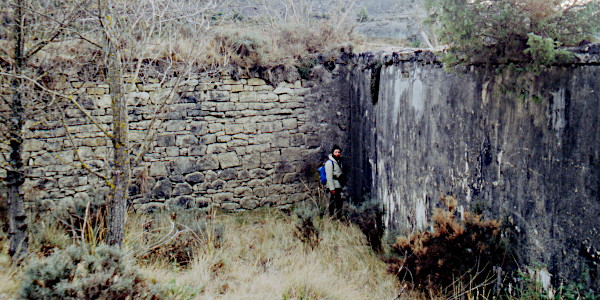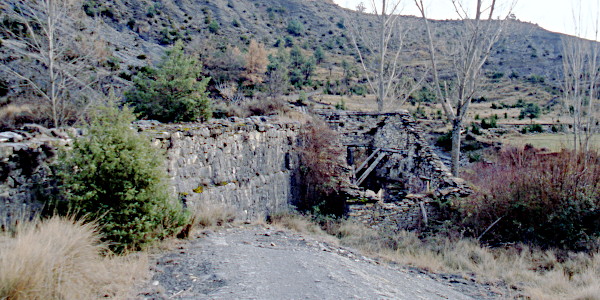
Samper




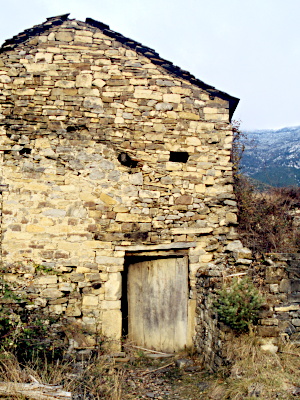
The front facade (2) reveals that the building was also thoroughly renovated in the past. The edge of an old roof or porch is clearly visible above the entrance door. We found no protective signs around that door. The sill consists of an old millstone (3).
In the former work place the remains of two stone cases (5) can be found. Against the opposite wall we find the crane (4). No trace of the stones. They must have been removed to serve as garden tables elsewhere.
During our follow-up visit we found some small pieces of millstone incorporated into the newly built walls (7, 8).
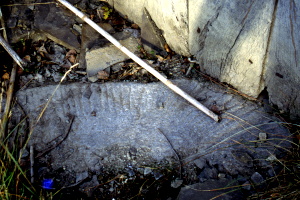
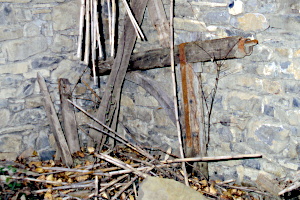
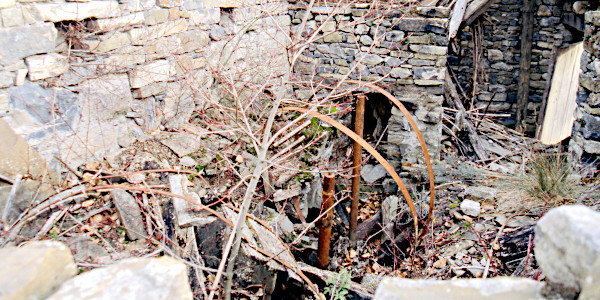
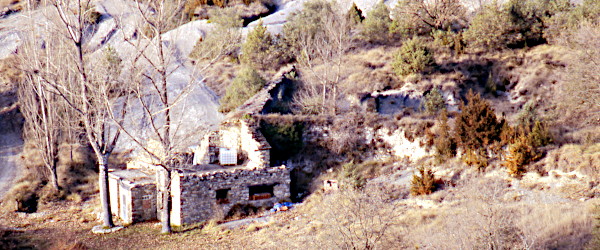
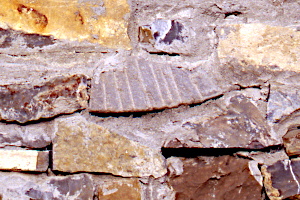
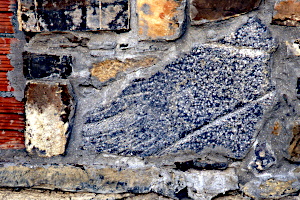
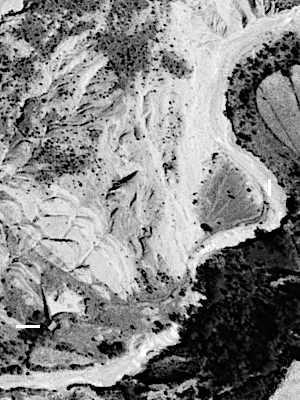
Almost the entire system is clearly visible in the 1977 aerial photographs (9) and during our visit we could still recognize almost the entire trajectory between the white strokes in 9. We were, however, not able to determine the exact location of the dam on the río La Nata.
The first section of the canal (upstream of the highest white stroke in 9) is carved into the river wall (10). In some places there is still a wall built from large blocks of natural stone (11). This was probably the case along the entire stretch of the river in the past.
Finally the canal leaves the river and runs along the foot of the slope to the mill pond. Along the way there are flat stones in the sides of the canal suggesting it had perhaps also a function in the irrigation of the zone.
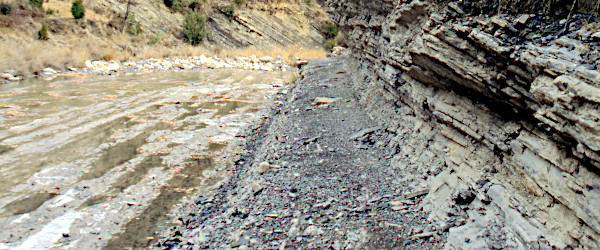
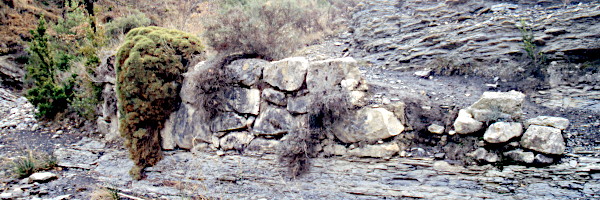
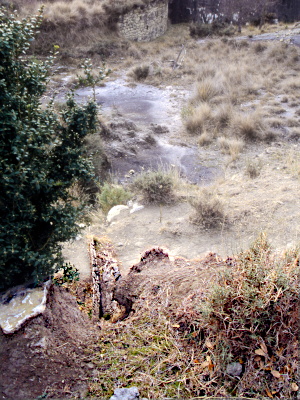
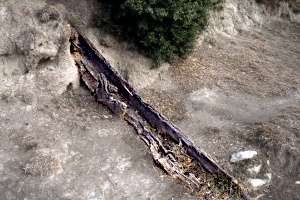
We have seen hollow tree trunks at several other sites: inter alia Alins, Lacabezonada, and Villalangua.
